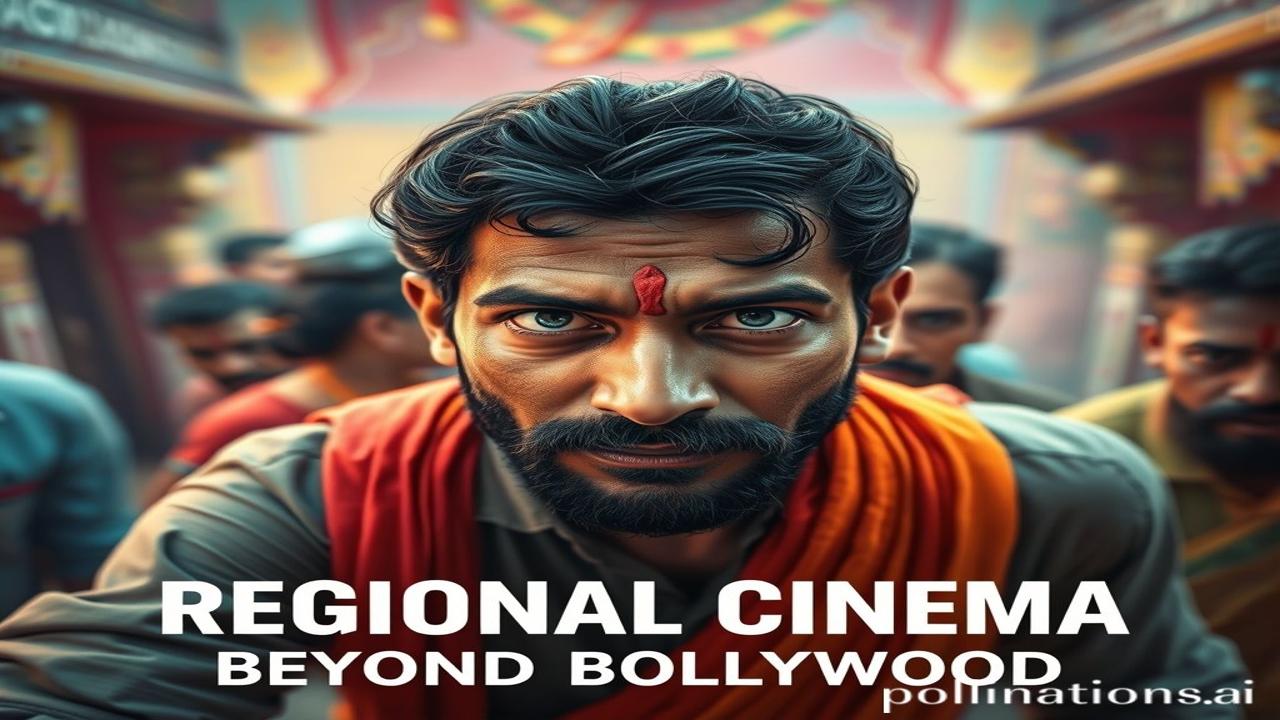Regional Cinema: Bollywood Ke Aagey Bhi Hai Jahaan!
Kabhi socha hai, Bollywood ke glitter aur glam ke alawa, India ki cinema ki dharti aur kitni rangeen aur diverse hai? Just like a hidden bazaar in old Delhi, full of treasures you never knew existed. Waqt ki dhool mein, kuch aisi filmi kahaniyan chhupi hain, jo Bollywood ki chamak-dhamak mein kahin kho gayi hain. Let’s unearth them!
Bollywood Se Pare Kya Hai Yeh Regional Cinema?
So, what exactly are we talking about when we say “regional cinema”? Simply put, it’s the films made in languages other than Hindi, focusing on local stories, cultures, and issues. Think Tamil cinema, Telugu cinema, Marathi cinema, Bengali cinema, and so much more! It’s like India’s own vibrant tapestry, woven with threads of countless languages and traditions.
This isn’t a recent phenomenon. Regional cinema has been around almost as long as Bollywood itself! In fact, some regions, like Madras (now Chennai), had thriving film industries before Bollywood became the giant it is today.
Why is it important? Bhai, imagine if all you ever ate was butter chicken. Eventually, you’d crave something different, right? Similarly, regional cinema offers perspectives, stories, and artistic styles that Bollywood often overlooks. It gives voice to the underrepresented, celebrates local cultures, and challenges the dominant narrative.
Zameeni Sach: Kahaniyan, Kirdar, Aur Zindagi
Imagine the bustling streets of Kolkata in the 1950s, the era of Satyajit Ray. Picture a Bengali film crew huddled together, working on a shoestring budget, but fueled by passion and a vision to tell authentic stories. These weren’t glamorous stars; they were ordinary people, representing the struggles and triumphs of everyday life.
Consider the Tamil film industry, where legends like M.G. Ramachandran (MGR) rose from humble beginnings to become demigods on screen and powerful political figures. Picture auto drivers blasting MGR songs from their stereos, his image adorning their vehicles – a symbol of hope and aspiration for the working class.
Think about Marathi cinema, often tackling social issues head-on. Picture villagers gathering in a darkened theater, their faces illuminated by the flickering light, as they watch a film about the struggles of farmers or the plight of women in rural India.
Yeh cinema sirf entertainment nahi hai; it’s a mirror reflecting society back at itself.
Dharohar Aur Pehchan: Aaj Ki Bharatiyata Mein Regional Cinema
Today, regional cinema is more vibrant and relevant than ever. Thanks to OTT platforms and increased accessibility, these films are reaching wider audiences, breaking down language barriers, and challenging Bollywood’s dominance.
From the gritty realism of Malayalam cinema to the extravagant spectacle of Telugu action films, regional cinema offers a diverse and exciting cinematic landscape. It’s a celebration of Bharatiyata in all its glorious complexity.
We see its influence everywhere. The rise of South Indian action directors in Bollywood, the adaptation of regional stories for a national audience, and the growing recognition of regional talent – it’s all a testament to the power and influence of regional cinema. Regional Cinema keeps our “Sanskriti” alive.
Mazedar Tathya Aur Bhram-Bhanjak
-
Log samajhte hain ki Bollywood sabse badi film industry hai… Lekin asli sach yeh hai ki, in terms of sheer number of films produced, the Indian film industry as a whole (including all regional languages) is the largest in the world!
-
Misconception: Regional films are low-budget and technically inferior. Truth: While some regional films are made on smaller budgets, many boast incredible production values, cutting-edge technology, and world-class talent. Films like Baahubali prove that regional cinema can compete with the best Hollywood has to offer.
Drishya Aur Bhavnaen
Imagine the scent of jasmine garlands and sandalwood incense wafting through the air during a film premiere in Chennai. Feel the vibrant energy of a film festival in Goa, where filmmakers from all over India gather to celebrate their craft. Hear the raucous laughter of the audience during a comedy screening in a small-town theater in Punjab. Regional cinema is an immersive, sensory experience that connects us to the heart and soul of India.
Antim Vichar Ya Uddharan
As Rabindranath Tagore once said, “The highest education is that which does not merely give us information but makes our life in harmony with all existence.” Regional cinema, in its diverse and authentic portrayal of Indian life, helps us achieve that harmony.
“Sarve bhavantu sukhinah,
Sarve santu niramayah,
Sarve bhadrani pashyantu,
Ma kashchid dukha bhag bhavet.“
May all be happy, may all be free from illness, may all see what is auspicious, may no one suffer. Let the stories from every corner of India illuminate our hearts and minds.
